- youtube
- bluesky
- Home
- About
- Costume Journal
- Membership
- Conference & Events
- Grants & Awards
- News & Social
Report by Leonard Bazzar
The Symposium commenced with dinner on Friday evening, followed by a talk by Martin Faulkner: Painting the clouds with sunshine. Martin, who makes reproduction millinery, spoke as a World War II milliner, presenting his collection and giving practical tips, including how to construct a hat from a sheet of paper!
On Saturday morning, we walked to Norwich Castle Auditorium where a number of interesting papers were presented. First up was Bethan Bide: The shoe as protective symbol during the London Blitz. Starting with the striking image of shoes on a bombsite, Bethan covered the practical as well as symbolic aspects of war: walkers through bombed streets valued comfort and durability. The next paper was given by Sonia Ashmore and Jenny Lister: The Shifting Shawl. Sonia and Jenny's described the preliminary research for their book using the V&A's collection of Kashmir shawls, showing what inspired them and outlining the detailed work to follow. The last paper in Session One was Charlotte Nicklas: Hats in British Fiction 1890-1930. Charlotte's presentation showed the importance of hats to previous generations in denoting class and giving more subtle signals. The fiction ranged from Virginia Woolf's Mrs Dalloway to Dorothy Whipple's High Wages.
After a coffee break, Christine Griffiths gave her paper: “Not Forgetting his Perfumed Gloves”; Accessorizing scent in 18th century England. Christine explained how scent was needed in accessories to hide various smells: of leather, the wearer and his environment. Her researches into the actual scents used extended to recreations in her Manhattan apartment! This was followed by the Student Design Awards. Sue Chow's second year students from Norwich University College of the Arts produced ingenious and efficient accessories which converted into something else: Toby Neve's winning cloak became a tent, its air vent crowned by the cloak's hat.
After lunch were two papers, the first by Glenda Haseler: Opera Cloaks - Functional, Frivolous and Fabulous. Glenda's research was triggered by access to her institution's collection, her research extending into more fabulous - and frivolous - matter (the New York bath tub scandal), and how the functional garment used for warmth outdoors became the fashionable item worn inside colder electrically-lit theatres. Dr Giorgio Riello gave a Keynote lecture: The Art of the Shoe; The Poetry and Pornography of a Pedestrian Accessory.
This contrasted shoes worn and enjoyed by all, and the works of art bought, and possibly worn, by the discerning rich. This stimulating approach to the cult of the shoe ended with an account of Luigino Rossi's enterprises, making for YSL and under his own label.
The delegates were then divided into groups to view the displays, study room and stores at the Castle Museum. Our visit to the costume store, an Aladdin's cave of accessories and other treasures, was crowned by the four choice Norwich shawls displayed for us by Ruth Battersby-Tooke, Curator of Costume and Textiles, with explanations of how their manufacture developed over the nineteenth century.
Our After Dinner Speaker was Annamarie Sandecki: Personal Accessories Exhibited by Tiffany & Co at 5 World's Fairs. For Tiffany, "accessories" are practical items, so no jewellery, but card cases, smokers' accessories and so on - still highly desirable possessions. This approach allowed a sharp focus and unexpected sidelights on how the firm operated - originally selling paste diamonds!
After the AGM on Sunday morning, Session Four commenced with two papers on hats, given by Alasdair Peebles: Hats and Caps for Boys 1850-1950, and Veronica Main: Hats : A Hundred Years of Change, 1750-1850. These presentations again made the symposium a sharing and developing of ideas, not just a conference imparting them. Alasdair showed us boys' headgear, as influenced by military if not high fashion. Veronica described the development of straw hats, influenced by technical advances as well as fashion, and Leghorn's place in this (peripheral). Their discussions suggested ideas for further research. This session concluded with Prof. Valija Evalds: The Changing Form and Fortunes of the Apron. Valija's presentation covered when and why women were and were not portrayed wearing aprons, the garments actually worn, and how the view of women working changed.
After the Patterns of Fashion Award presentation (reported elsewhere) and lunch, we enjoyed the two concluding papers. Ruth Battersby-Tooke spoke on Curating a display of functional accessories. Rather like our symposium, Ruth showed how much interesting material can be crammed into a small space, and how it is possible to develop themes and provoke thought as well as highlight isolated items, through judicious contrasts and similarities. The final presentation was by Leanne Wierzba and Gemma Williams: Framed! Contemporary Eyewear in Fashion. This covered more than its "official" period of 1950-2012, marked by specs, a medical device, becoming eyewear, a fashionable accessory. Images of striking eyewear were given some historical context, including the influence of travel; 1930's aviator designs are still used.
We then toured the Bridewell Museum. This being the museum of Norwich's history there was plenty to see on textiles and shoes, excellently displayed and explained; I was not the only one enthralled by the Jacquard power loom with a video showing exactly how it operated.
The Monday outing to see Stumpwork at the Sainsbury Centre for Visual Arts.
was greatly enhanced by Imogen Stewart's impromptu introduction to these delightful examples of seventeenth century embroidery and their mysteries - who made them, amateurs or professionals, what exactly is being depicted and why, and what techniques were used? A visit to the Art Nouveau exhibition allowed a final view of superb jewellery, some by Tiffany, rounding the weekend off well.
Leonard Bazar
ACCESSORIES SALE
A sale of accessories donated by Costume Society members was held in the Symposium hotel on the Sunday, which raised just under £500.00, to be used to support the various Costume Society Awards. Michelle Thomas and Judy Tregidden would like to thank all the givers, buyers and helpers who together contributed to this very successful result.
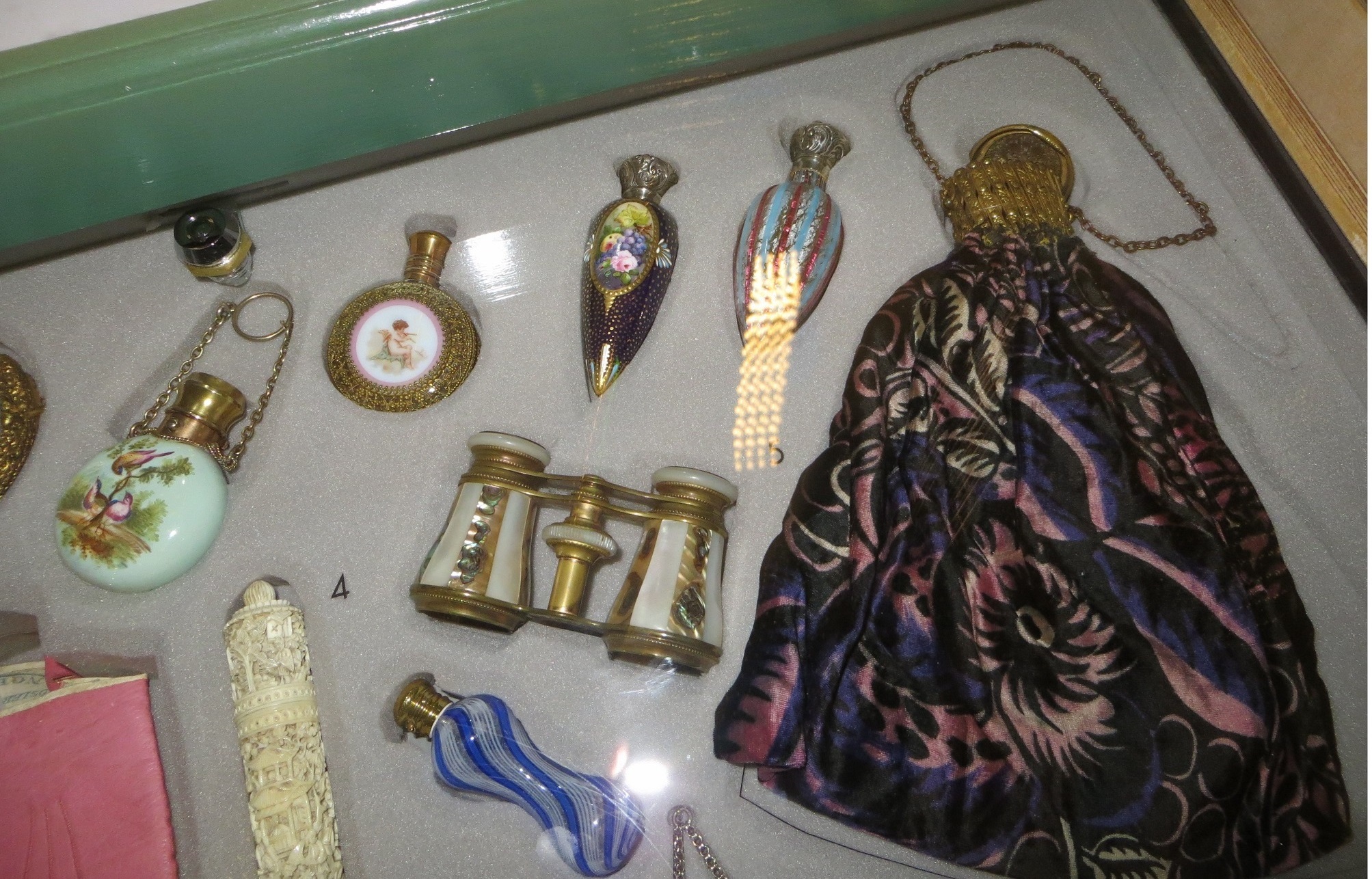
Some fashion accessories at Norwich Museum
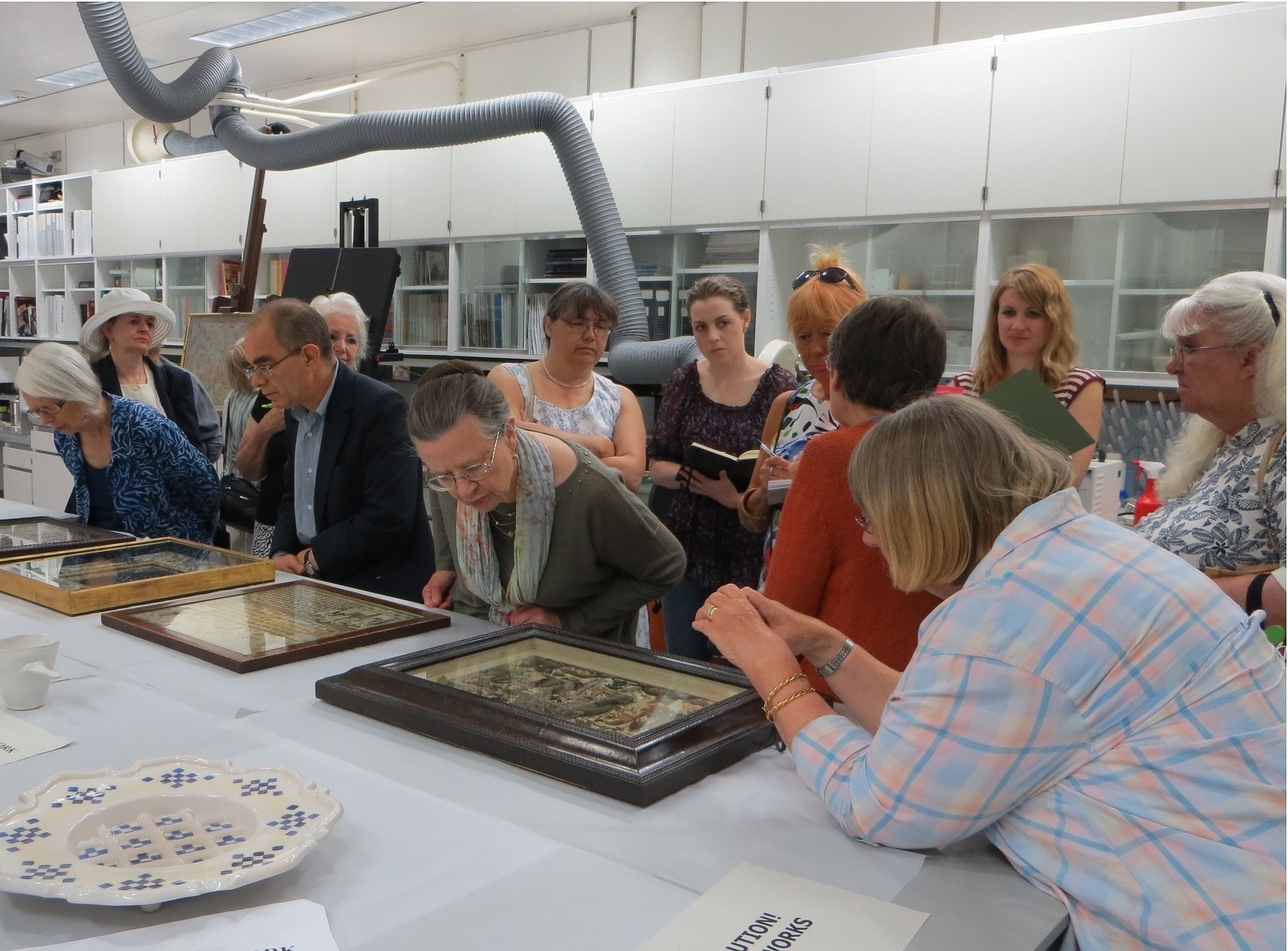
Visit to the Sainsbury Centre for Visual Arts
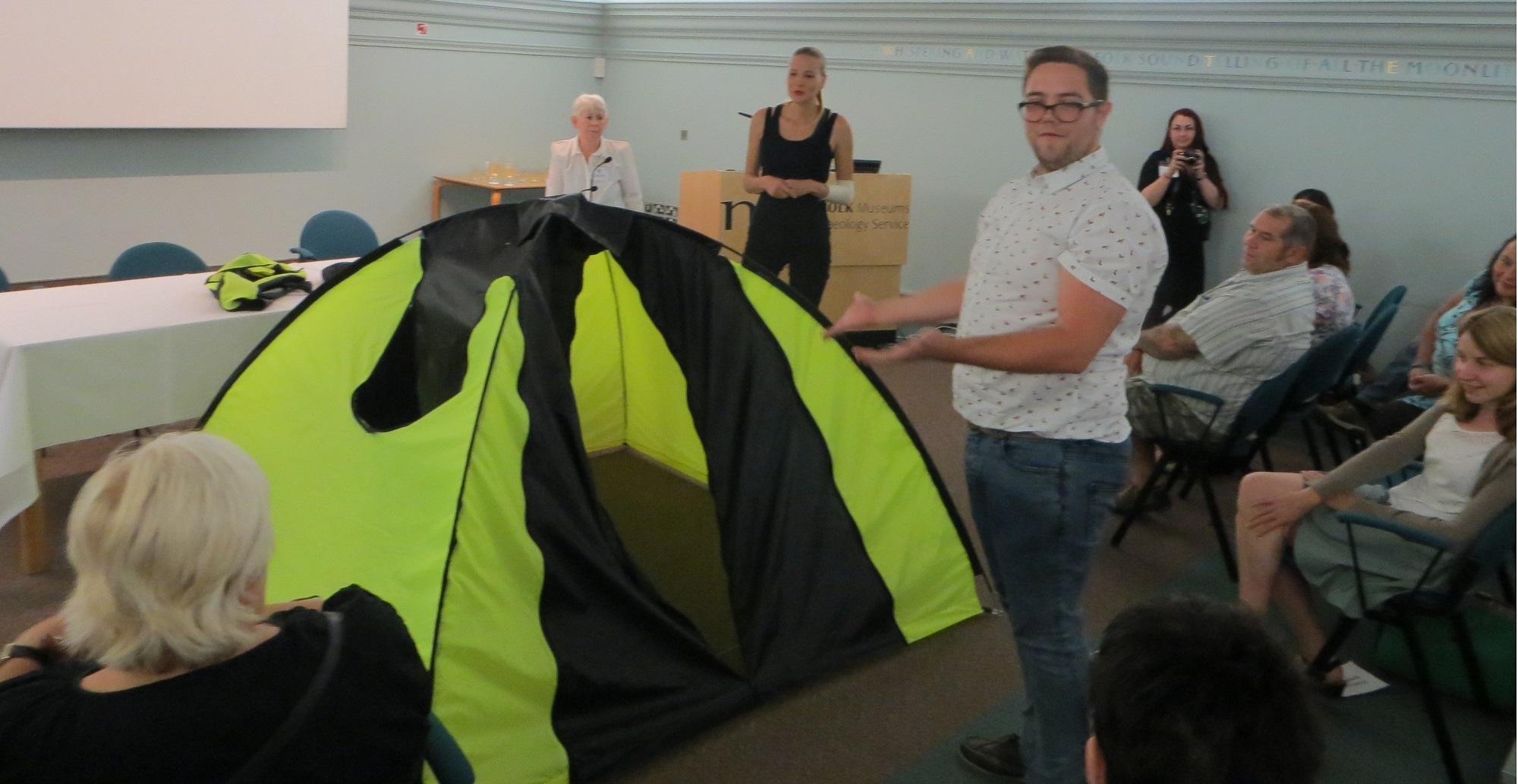
Winner of the Student Design Awards - Coat becomes a tent
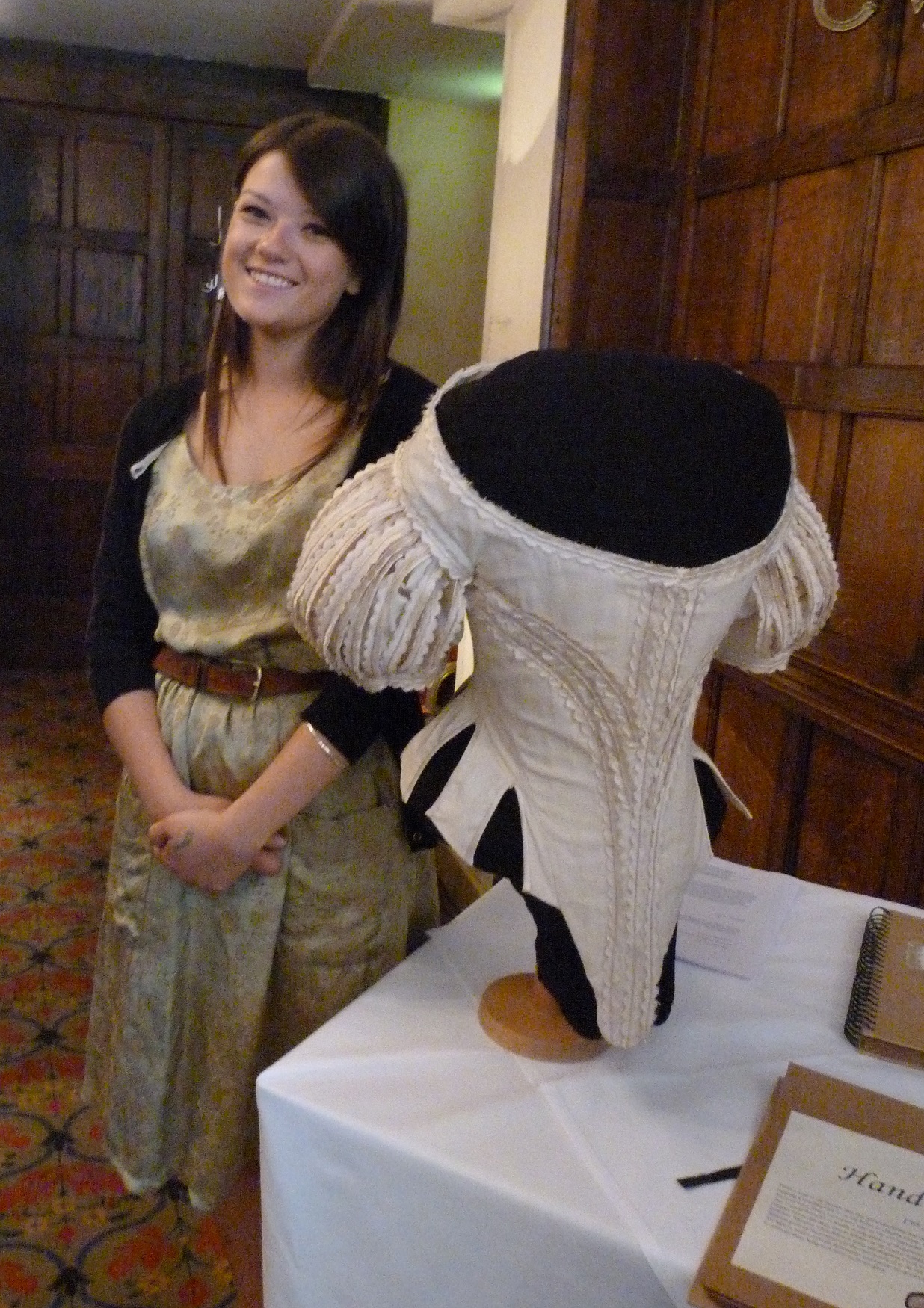
Winner of the Patterns of Fashion Award
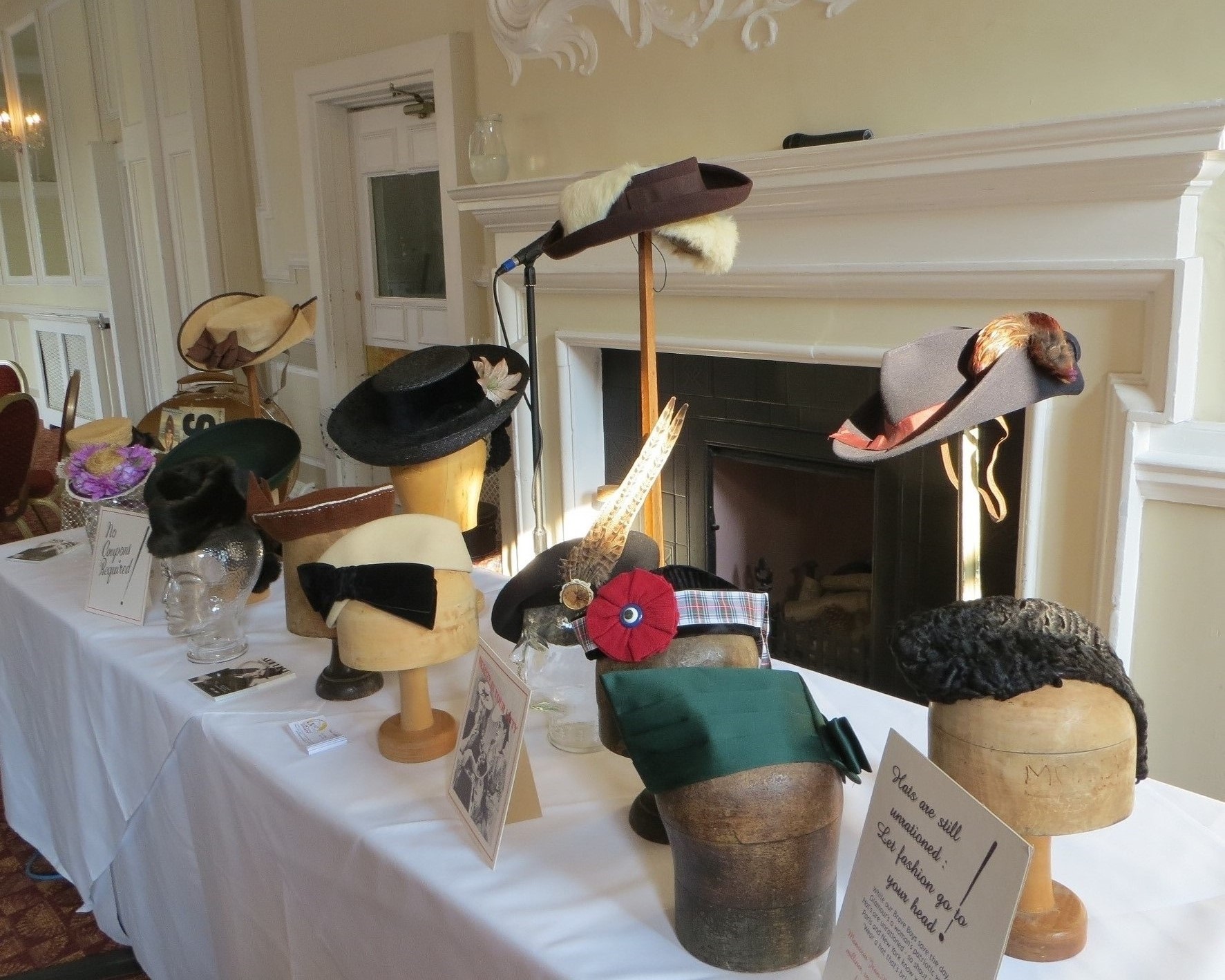
1940s and 1950s hats shown at the after dinner talk